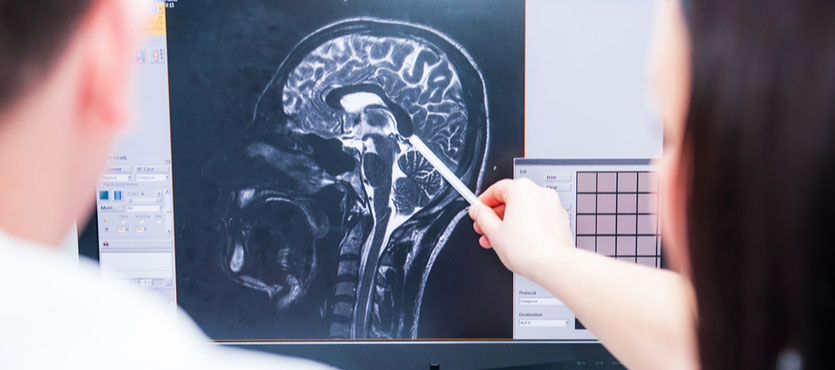To better understand and treat combat-related Traumatic Brain Injuries in places like Afghanistan, the U.S. Army announced that it would partner with a technology company to take a new look at these wounds.
Zeriscope, a South Carolina-based company, received an exclusive contract to study heart rate variability, among other things. Researchers believe that HRV has a direct effect on attentiveness and other emotional responses, and that TBIs affect HRV. So, test subjects will wear sensors on their heads that are wirelessly connected to a telemedicine platform. Dr. Michael Jenkins-Guarnieri, who is a TBI researcher at Madigan Army Medical Center, said the device had both short and long-term potential. Right now, the device can evaluate existing treatment methods and their effects on individual patients; in the future, HRV can help doctors evaluate emerging brain injury treatment methods.
This technology has been around for a number of years, but until Zeriscope rolled out its Mobile Telemedicine Exam Kit in March 2017, the devices were unwieldy and not cost effective. At the time, company officials said that the “low-cost, portable Zeriscope system opens up a new universe of applications across numerous healthcare models and practices.”
The Roots of Combat-Related Brain Injuries in Afghanistan
“Treatment” is the operative word for combat-related brain injuries because at this point, such wounds are incurable. Someday soon, stem cell therapy and other emerging treatments may enable doctors to re-grow brain cells and replace dead ones, but such treatments are years away. Until then, effective physical therapy is the best and only approach. Doctors have understood this dynamic for a number of years.
Recently uncovered videos from a military hospital in England clearly confirm that the illness that doctors once dismissed as “shell shock” is, in fact, a physical illness that only responds to physical therapy. The subjects in these videos had all been subjected to combat stress, and they are all quite clearly not in full control of their bodies. They all have symptoms like abnormal walks, severe facial tics, uncontrollable shaking, blank stares, and other symptoms that make it difficult or impossible to perform most daily tasks. All these patients responded favorably to aggressive physical therapy which, at the time, probably seemed over-the-top and unnecessary.
In fact, based on what we now know about combat-related TBIs, it is fair to speculate that these World War I soldiers suffered from a physical illness, which would explain their positive response to aggressive physical therapy. Before the Great War, most armies used artillery shells, bombs, and other ordinance that utilized picric acid, which is basically the same chemical in fireworks. When the world’s armies switched to TNT, the bursting shells probably released more violent shock waves, and it is these waves that disrupt brain functions and cause many TBIs.
A New Look at Afghanistan Brain Injuries
Yet old myths about TBIs, Post Traumatic Stress Disorder, and other “alphabet soup” conditions persist. Until recently, the myth that brain injuries are processing disorders had some scientific basis. But now, researchers have conclusively established that exposure to combat stress erodes the amygdala, and only long-term physical therapy effectively treats this physical wound.
Many doctors equate the frontal cortex and the amygdala with a horse and rider. The frontal cortex governs emotional responses and instinctive behavior; the amygdala regulates logical and reasoned activity. If the rider (amygdala) is weak, the horse (frontal cortex) takes control. Therefore, PTSD victims experience symptoms like flashbacks, heightened awareness, and nightmares.
Largely because of these findings, the Canadian Armed Forces recently did away with the PTSD designation and replaced it with Operational Stress Injury (OSI). OSI victims qualify for the Sacrifice Medal, which is Canada’s Purple Heart. Only OSI diagnoses after 2001 merit a Sacrifice Medal, in a nod to the changing aspect of warfare.
Physical Therapy for Afghanistan Brain Injury Victims
The Defense Base Act provides funds for private military contractors who suffer a brain injury during overseas action to undergo physical therapy. Such treatments usually include pure physical therapy, which allows victims to regain control over their bodies, as well as occupational therapy, which enables victims to recover lost physical jobs skills.
Many times, insurance company adjusters try to prematurely end physical therapy, claiming that the victim has reached his/her Maximum Medical Improvement. Premature MMI claims are especially common in brain injury cases, because many patients progress unevenly and they may go several months without showing any noticeable improvement before a breakthrough occurs. An aggressive Defense Base Act attorney helps to ensure that the DBA funds continue to come in for as long as the victim needs them, and not until the payments become burdensome for the insurance company.
Injured contractors are eligible for other benefits as well, such as lost wages. Most victims can obtain two-thirds of their average weekly wage for the duration of their temporary disabilities. If they are unable to return to work, or must go into a different kind of work that pays less money, benefits could potentially continue for life.
For more information about the other available medical benefits, contact Barnett, Lerner, Karsen & Frankel.

